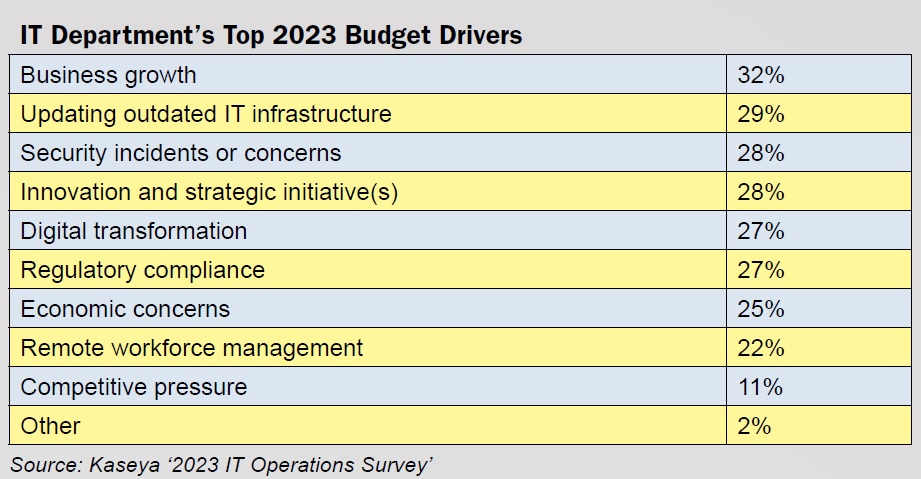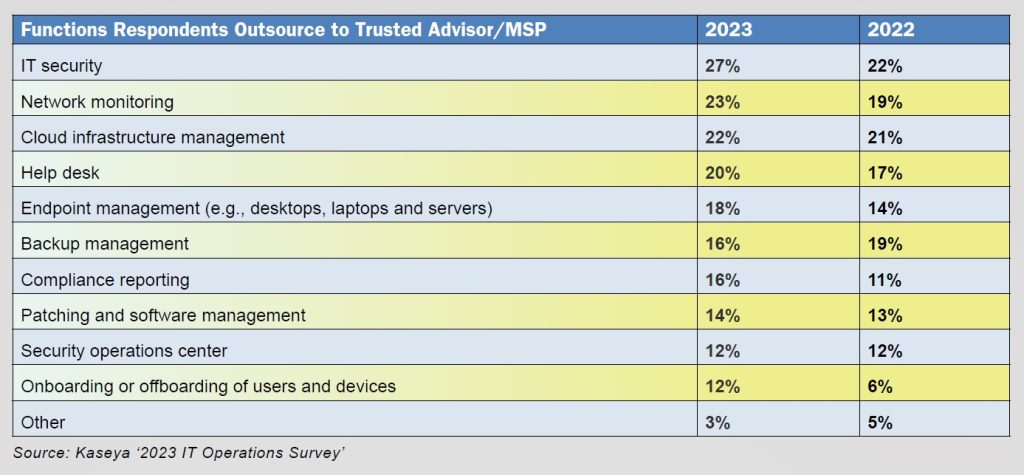Why IT leaders need trusted advisors more than ever
No longer are the days when business IT and network services primarily are used to execute a task or provide a certain intended capability. (You need two people on opposite sides of the planet to talk? Here you go. Need an engine to process online orders? How about this? Need to save money on this? We got tech for that.) Even optimization of existing systems is no longer enough on its own.
Today, business technology stacks, as well as the CIOs and IT leaders that manage them, are being asked to do a whole lot more for the business. One even could argue that it’s an unfair amount. Quite literally, CIOs and their staffs are being asked to “transform” organizations and their operations. Pandemic shutdowns and the resulting remote revolution officially kick-started the era of digital transformation, and CIOs are the ones sitting on the hot seat.
“Technology is no longer just an enabler. It’s now a strategic business function,” said Salman Ali, CIO, McDonald’s Germany, in an Info-Tech Research Group briefing.
“Digital transformation has given technology a new front seat that’s really driving the business,” he continued.

For CIO and CIO-types, digital transformation has necessitated whole new levels of understanding into just about every element of business and operations. It would seem, in their present situations, that CIOs could use a good deal of trusted advice, possibly more than ever before. And that trusted advisor must be able to advise on a lot more than the tech. IT decision makers, quite frankly, need “big picture” trusted advisors.
Of course, it’s not lost on us that this is a time when momentum is moving toward self-service and automated channels, and some very large forces are behind the push. Even so, it’s not hard to argue that IT departments are facing unprecedented pressures. In addition to supporting an expanding and increasingly mission-critical infrastructure, IT executives are being tasked with finding ways to accelerate growth, discover and drive revenue, improve CX and EX, monetize proprietary technology, and sometimes even create and drive organizational strategy.
In a recent survey of more than 1,300 IT operations professionals by IT and security management provider Kaseya, the most popular budget driver for 2023 was “business growth,” coming in just ahead of both security and the updating of outdated infrastructure.
To make the shift from delivering outcomes to discovering outcomes, IT leaders will need to acquire deeper understanding of many, if not all, lines of business. After all, IT touches everything, and with the rapid pace of innovation and some transformative technologies brewing, often LOB department heads will be unaware of what solutions are available and what can really help. In some cases, no one yet knows how and where certainly technologies will be applied. The “killer app” could be a highly customized and personalized solution that hasn’t even been conceived yet. More than likely, IT pros will be expected to push innovation into business segments.

In turn, CIOs must be able to communicate across large and complex buying circles that can include leaders representing sales, supply chain, HR, customer experience, marketing, etc. Being influential within those buying circle will require CIOs to discover, explain and “sell” the ROI of technology deployments within each business segment, necessitating a deeper understanding of the challenges, processes and objectives of those business segments.
“CIOs will need to find business champions to vouch for the important contributions IT is making to their area,” advised analysts at Info-Tech Research Group.
“CIOs should develop their handle on how KPIs influence revenues and costs. Keeping tabs on normalized year-over-year revenue comparisons can help demonstrate that IT contributions are making an impact on driving profitability,” they continued.

For organizations that have migrated significant resources from on-premises data centers to the cloud, Info-Tech even recommends CIOs appoint a type of “cloud economist” to closely monitor cloud usage and adjust it to financial expectations, particularly when cloud-based data flows aren’t directly connected to the revenue-generating activity seen in the business.
Skeptics and Shortages
Indeed, the paths to profits and positive outcomes must be clear. After a few years of rapid adoption and necessary reactions, CIOs are facing some pushback from CxOs who want to see better returns on what they’ve already deployed, several surveys suggest. And make no mistake, said Liz Hilton Segel, McKinsey & Co. senior partner, IT investment “is 100 percent on the minds of CEOs.”
When McKinsey asked whether companies are engaged in some form of digital transformation, 89 percent said that they are. “But only one-third said they think they’re getting the financial value they anticipated at the start,” said Hilton Segel, in a recent research note from McKinsey.
In a survey by FinOps solution provider SoftwareOne, only 27 percent of the 99 percent of organizations utilizing cloud technology said they are greatly exceeding the value they expected from their cloud investment, “largely due to rushed implementations and flawed service configuration,” said SoftwareOne researchers.
The pressure is palpable to CIOs. According to Info-Tech’s survey, almost nine in ten CIOs say that business frustration with IT’s failure to deliver value is a pain point. Supervisors have a slightly more favorable opinion, with 76 percent agreeing that it is a pain point. “Similarly, nine in ten CIOs said that IT limits affecting business innovation and agility is a pain point, while 81 percent of their supervisors say the same,” said Info-Tech researchers.
In the Kaseya survey, for its part, respondents citing an inability to support strategic business as a concern doubled in 2023.
One barrier to success, in particular, that popped up more than once among survey respondents was technical debt, or the price a company pays for short-cut fixes in IT implementations or for choosing easy but limited solutions. Almost three quarters (72 percent) of SoftwareOne respondents said their organization’s digital transformation efforts are lagging due to technical debt. Half cited a complex legacy IT infrastructure as one of their key challenges during the next year.
Looking broader at the specific barriers to achieving the goals of digital transformation, CIOs surveyed by Info-Tech pointed to a wide variety of challenges, all at relatively equal rates. And while the complexity of today’s IT infrastructure was clearly number one on the list, organizational and cultural challenges were highly represented.

What also can’t be forgotten are the pervasive talent shortage issues facing IT leaders.
“CIOs are finding it difficult to hire the talent needed to create the capacity they need as digital demands of their organizations increase,” said Info-Tech researchers. “This could slow the pace of change as new positions created in IT go unfilled.”
Indeed, the importance of attracting and retaining talent has increased for almost all CIOs and CISOs, as 94 percent of such executives surveyed recently by CEO.digital stated that it’s become increasingly critical to their roles during the last two years.
In relation to cybersecurity skills, in particular, talent shortages leading to capacity constraints was on top of the list of challenges faced by IT professionals, showed Info-Tech findings. Fifty-four percent said they are concerned or very concerned with this issue. In a separate survey from SD-WAN provider Expereo, 49 percent of CIO admit to struggling to find cybersecurity experts; whilst 41 percent have trouble finding artificial intelligence (AI) and machine learning (ML) experts.
“CIOs may need to consider reskilling and rebalancing workloads of existing staff in the short term and tap outsourcing providers to help make up shortfalls,” said the research firm.
Add it all up and it could be why as many as 80 percent of the respondents to the Kaseya survey said they outsource one or more IT services to an advisor or MSP, up from 64 percent in the 2022 survey. Not only are more respondents outsourcing IT services but they are also outsourcing a greater number of IT services, showed the Kaseya data. More than a quarter (27 percent) of the respondents said they outsource IT security, up from 22 percent in 2022.

All told, a full 84 percent of IT decision makers surveyed by MarketPulse Research already use or have “definite plans to use” third-party providers in 2023, and an additional 13 percent are considering the use of third-party providers. More than half of respondents (55 percent) said they have plans to increase their use of third-party trusted advisory services.
When considering the complexity and mission-critical importance of the current realities faced, compounded by the demands to discover rather than just deploy and support innovation, CIOs and IT leaders, it would seem, have never been more in need of the vision of a trusted expert. That’s of course assuming the “expert” can help IT decision makers – as well as the buying circles they face – discover, understand and convey how solutions can drive the intended outcomes within their specific business model, processes, industry or competitive advantage. Certainly, for many situations, persuading the buying circle will require more than what can be gleaned from a FAQ page.
CIOs and IT personnel are being advised by business coaches and experts on how to be “IT superheroes” for their companies. Most superheroes of fiction and comic book lore rely on a trusted, behind-the-scenes companion to help them save the day.










